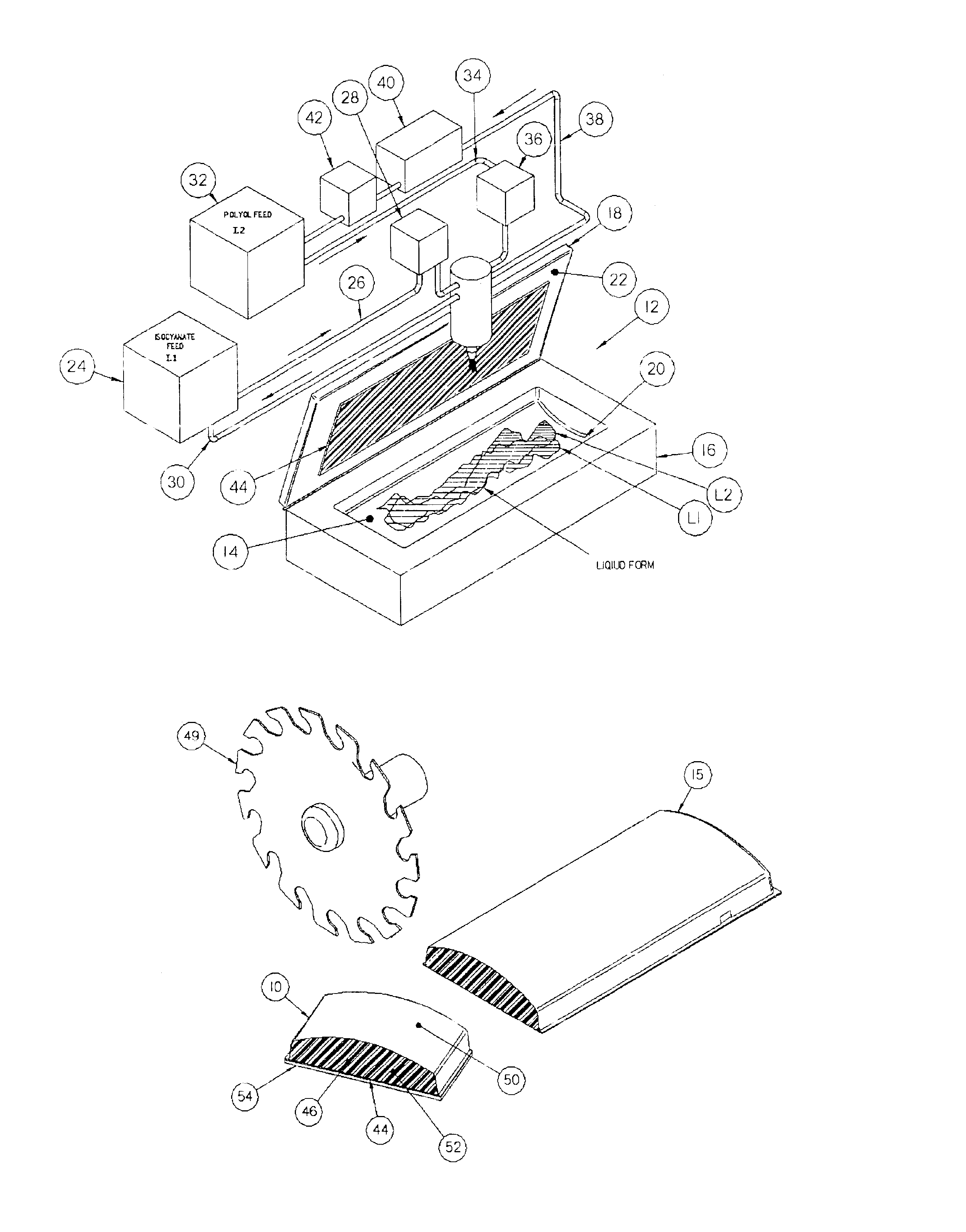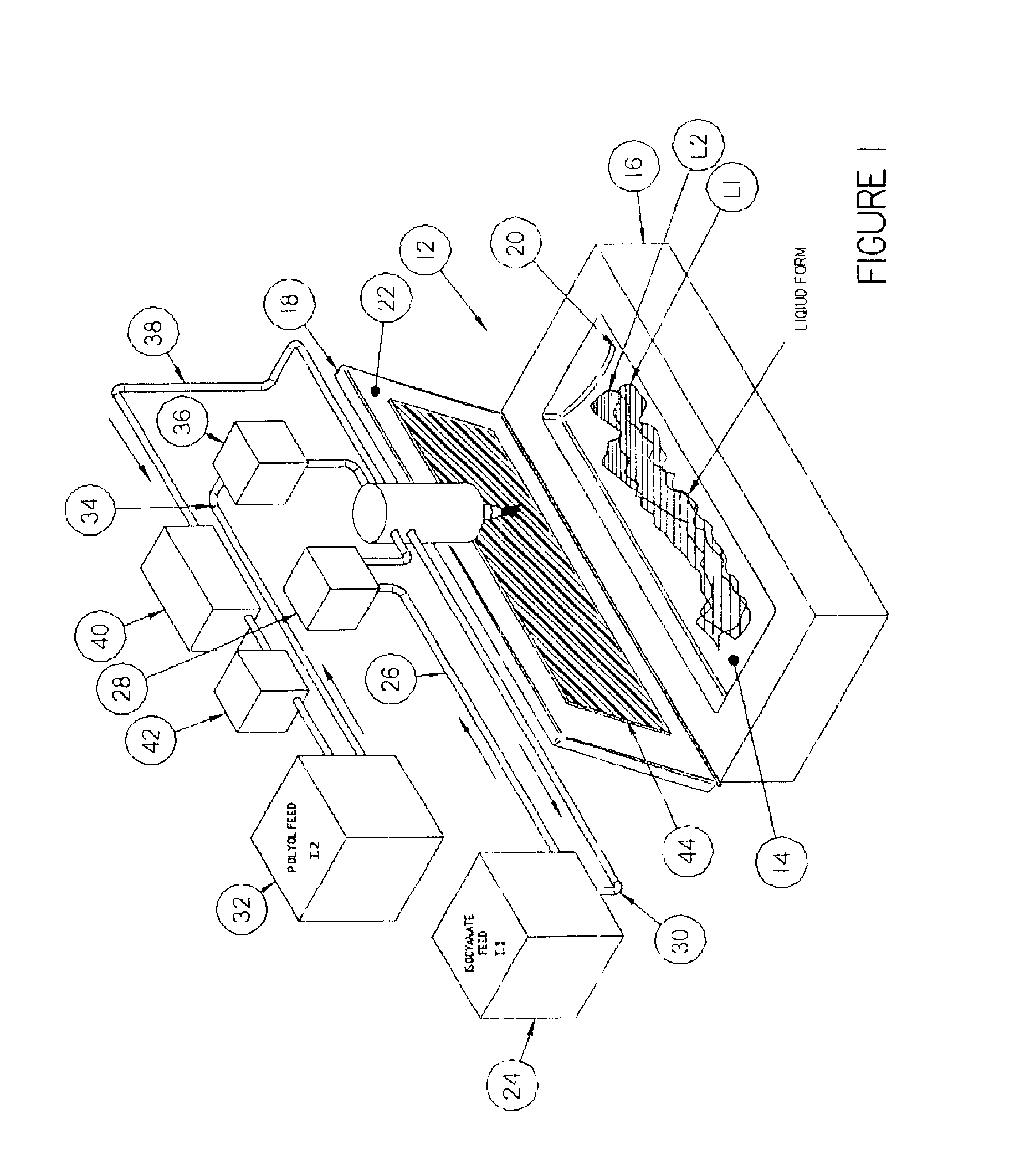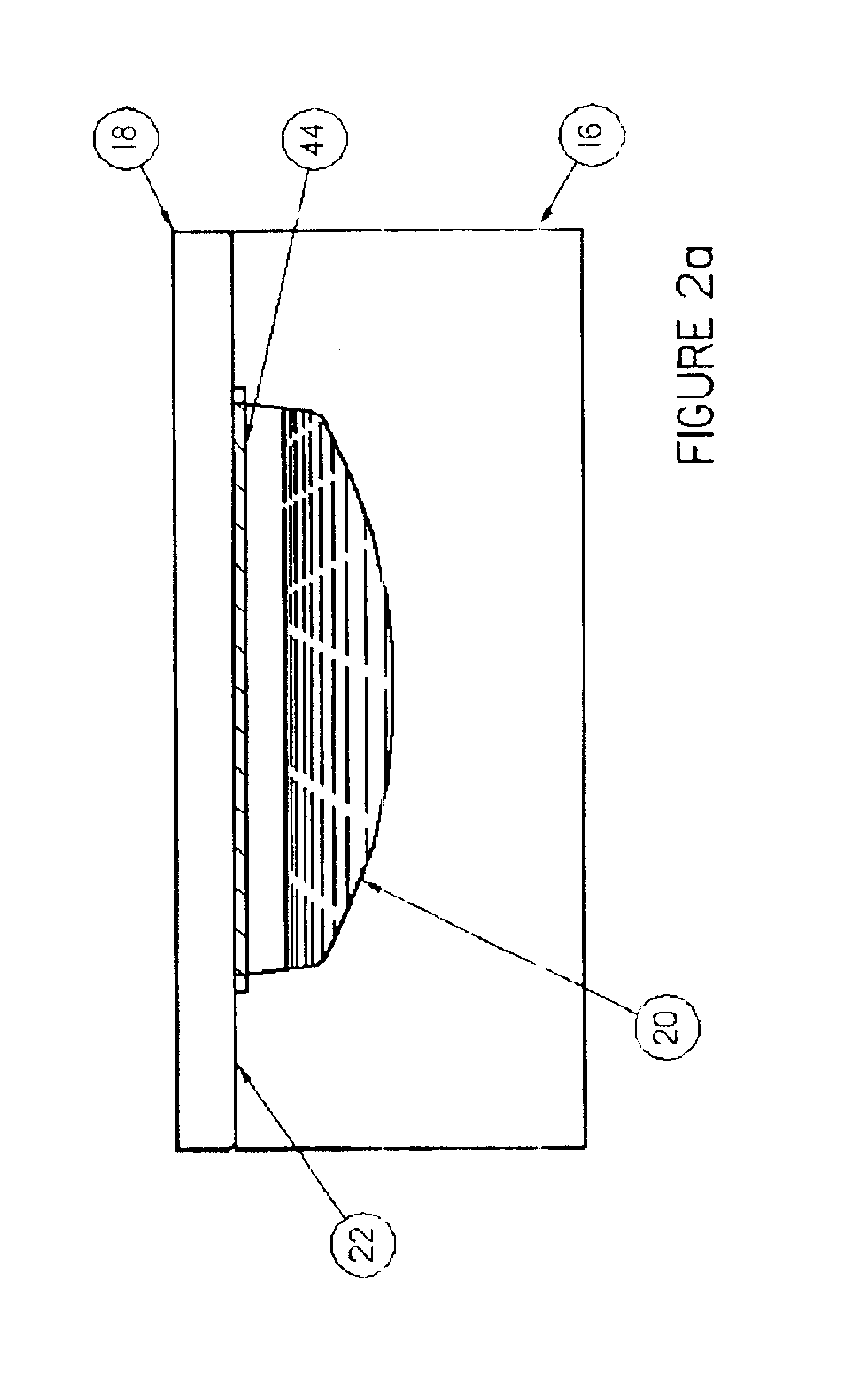Implement for abrading and method of making same
- Summary
- Abstract
- Description
- Claims
- Application Information
AI Technical Summary
Benefits of technology
Problems solved by technology
Method used
Image
Examples
Embodiment Construction
Referring now to the drawings in FIGS. 1-6, the abrading implement of the present invention is generally referred to by the numeral 10. The abrading implement 10 is formed via a molding process, preferably using Reaction Injection Molding (or RIM). The process is one in which two reactive liquid components, a polyol and an isocyante, for example are metered, blended together, and injected into a closed mold at low pressure.
Here, the present invention uses a mold 12 configured with a cavity 14 capable of forming a plank-like raw abrading implement 15 as seen in FIGS. 2c and 4. The mold 12 includes a bottom 16 and a top 18 which include inner opposing surfaces 20 and 22, respectively, which collectively form the cavity 14. The mold 12 is relatively elongated to enable further processing of the raw implement 15 in order to provide multiple finished abrading implements 10 from the raw implement 15. The surfaces 20 and 22 can include a flat surface, an arcuate surface or a combination th...
PUM
 Login to View More
Login to View More Abstract
Description
Claims
Application Information
 Login to View More
Login to View More - R&D
- Intellectual Property
- Life Sciences
- Materials
- Tech Scout
- Unparalleled Data Quality
- Higher Quality Content
- 60% Fewer Hallucinations
Browse by: Latest US Patents, China's latest patents, Technical Efficacy Thesaurus, Application Domain, Technology Topic, Popular Technical Reports.
© 2025 PatSnap. All rights reserved.Legal|Privacy policy|Modern Slavery Act Transparency Statement|Sitemap|About US| Contact US: help@patsnap.com



